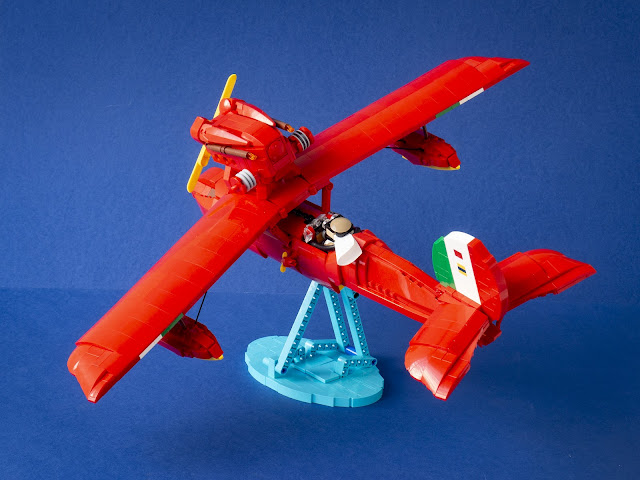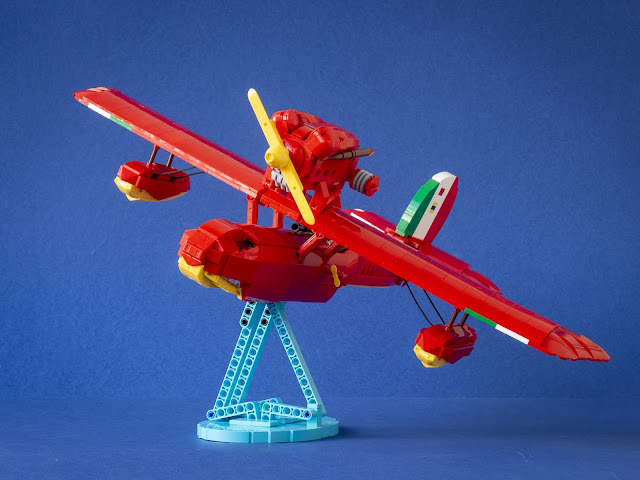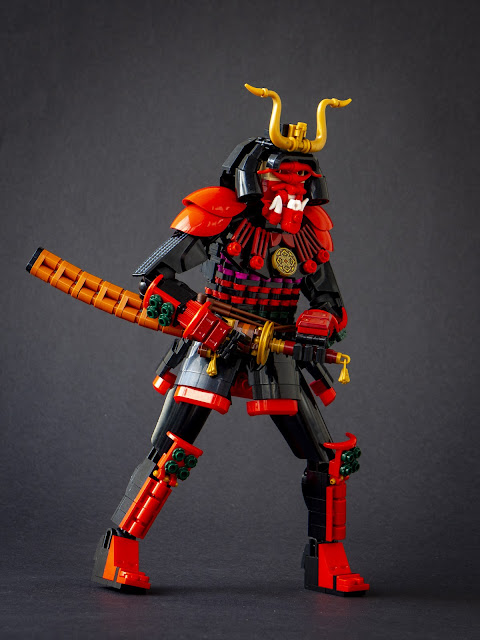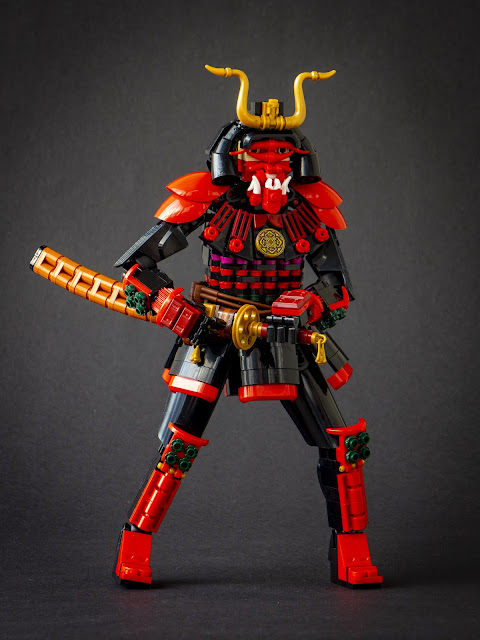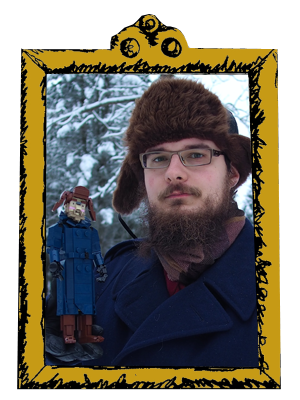This was my entry to my LUG Palikkatakomo's Movement Contest. I got the first prize in the pro category - second time in row this year (and the final tally wasn't as tight as last time). This was a last-minute builds, and I had to shot it with artificial light as the sun of the last day had long since set. These images are new, taken today - you can see my original ones in the end of this article. The video is original, though (it was shot by Pinja who also made the photographing set). As the name suggests, the aim of the contest was building a movement, in a literal sense - no political movements - fr example. The rules allowed both "real" movement via mechanisms and sense of movement frozen in time. The first type was more popular.
In my approach, I merged a long-time potential shortlist project into the contest requirements. The updated Finnish translation of Lord of the Rings was published late last year, an impressive edition with illustrations by the author and chapter names in red ink. I read it in the beginning of the year (I think I read the book for the first time in 2007 or 2008), followed by the watching of the Peter Jackson films (still holding their thunder and more), and, last but not least, reading History of the Lord of the Rings, published in The Return of the Shadow, Treason of Isengard, War of the Ring and the first part of Sauron Defeated. I've had the hardcover compilation edition for about ten years, but I had never read them from cover to cover, only dipping my toes in the most intriguing matters. I had missed a lot of content. On these reads and watches, I was particularly touched by the mysterious Hold of Dunharrow, where the Muster of Rohan takes place, and the riding of the army through the darkness sent from Mordor. This story element is mostly gone in the films, for a good reason: You need proper light to show things in the screen, something that written word doesn't have to worry about. But it also makes the arrival of the riders in the long-awaited dawn more powerful.

My desire to build King Théodon goes further back, though. I was impressed by the character in the first time I saw the trilogy in around 2005; the character is successfully deepened from the books, and the performance by the great late Bernard Hill reminded me of my grandfather. I remember making a watercolour painting of Théoden around 2011; but I had not really touched the subject since. Rohirrim are very strongly about movement, and the charge in the Pelennor fields was the moment of glory for Théoden. This was the moment I had been looking for.
Nonetheless, the task was not easy. I've never built motion sculptures. I used to make some walking machines in around 2010, but this was quite different. The horse didn't need to gallop, it needed to look like it would be going relentlessly forward, hundreds or kilograms of horse and man about to smash into the troops of Mordor. I stared at the gif version of Muybridge horse sequence, proving that a galloping horse has each hoof in air at the same time. I had really no idea how to achieve that - but I knew someone who did. I had the pleasure to meet Jason and Kristal Allemann when we displayed models simultaneously in the LEGO House 2019-2021. Jason designed his famous Galloping Horse model in 2020, with free PDF instructions. I took Jason's design as a base to expand and revise on.

I soon realised some design aspects that I needed to change. Jason's horse has perfectly flush motion without pauses and crackles. This was enabled by simplified anatomy, featuring only two joints on each legs. I wanted to be closer to the real animal in Muybridge sequence, so I added the third joint to each leg. This caused some problems, but I overcame them with white rubber band sinews that steer the movement to the right direction, preventing the legs from locking. I managed to do this while still keeping the same Technic mechanism, connected to each leg with bars. I also think it was beneficial in the contest to have a heavy modified mechanism instead of a directly copied one.

Jason's horse design is streamlined and beatiful, like a classical sculpture. I wanted to take Snowmane to a bit different direction: This was the war-horse of proud warrior folk, a large beast with heavy hooves and blaring nostrils and visible horse-teeth. I looked for the movie design for inspiration, but the horse armour needed to be lighter to allow the movement. I also leaned heavier to greens, the colour of Rohirrim. Nonetheless, the clasp in the front is a direct reference to the movie design. I'm particularly happy with the chicken suit wing ears and the Technic cam (snow)mane.

I built the complete motorised horse before taking any stabs at Théoden himself. I let the horse design determine the scale, which ended up being quite a bit smaller than I had though. As a result, Théoden is somewhere between Miniland and my usual scale. I knew from the beginning that there would be a spear and a shield, and that the spear would be positioned to skewer some orcs, and that the shile d would feature a reprise of a sun design I made in 2012 for Ragnfast, who I believe was my first model to be featured in The Brothers Brick. I wasn't able to make a green background for the shield so I had to settle for dark orange.
Théoden had to be very sturdy to not fall apart in the galloping motion, so I couldn't have the usual level of sophistication on the limbs. I included the essential details, like the stirrups and some chain mail. Théoden is described drawing his sword after his spear shatters, and here it rests in the scabbard waiting for the moment. I liked Théoden's helmet design in the films, but I felt that this scale was too small for anything like that, so I made a new design. I'm very happy with the combination of the arch pieces, click hinge nose and the bushy beard (Théoden is fortunately descibed having a long white beard). It's pretty close to some Miyazaki geezers, a very personal and proud point of reference. The armour shell helmet is far from any historical designs, but it was compact enough, preventing the head from growing too large.

2025 will show how well the mechanism will endure in the exhibitions. It's driven by 1990s 9V motor connected direcly to the output of a train speed regulator. Getting power from the grid is helpful in the events, and regulating the speed made the mid-process testing easier. As the weight of the model gradually rose, I needed more and more speed to have it running properly. Ultimately, the maximum speed was not too much.














